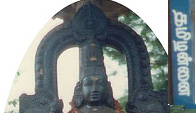
 |
||
| Home Culture Lessons > I 1 2 3 4 5 6 II 1 2 3 4 5 6 III 1 2 3 4 5 6 IV 1 2 3 4 5 6 V 1 2 3 4 5 6 VI 1 2 3 4 5 6 Select Unit | ||
|
| ||
| Greetings are a very important part of the Indian culture. Likewise, Tamil speakers take greetings very seriously. People take time to greet others even if they are strangers. The most prominent way of greeting is by sharing a smile. Saying வணக்கம் is more popular in urban and semi-urban areas--usually among those with higher education--than in rural areas. However, when friends and acquaintances meet, they generally stop and exchange an extended greeting.
The general greeting that can be used by anyone is வணக்கம் (greetings), எப்படி இருக்கீங்க or சௌக்கியமா? (How are you?). When one says வணக்கம் with head bowed or folded hands the respondent is expected to perform a similar gesture. When asked the question எப்படி இருக்கீங்க?, the respondant is expected to reply either நல்லா இருக்கேன் or சௌக்கியம் (I am fine). In extraordinary cases, some might respond with ஏதோ இருக்கேன் meaning 'sort of okay'. Like in English, usually the respondant is not expected to say for example 'I am not well' or 'doing some what okay' etc., as their initial response to எப்படி இருக்கீங்க?. The proper way is to say நல்லா இருக்கேன் 'I am fine' and after a few exchanges bring up any unpleasant news. People who keep in touch regularly normally keep track of any good or unpleasant events in each others families, and during greetings they respond appropriately. For example, if there was an unpleasant event in someone's family, no one is expected to ask him or her questions like எப்படி இருக்கீங்க?, சௌக்கியமா? or even வணக்கம். Rather, such encounters would usually begin with a head nod or smile. The length of a greeting exchange depends on the level of familiarity between the parties concerned. Thus it may even take between a minute and longer. Even when people are in a hurry, they will take time to exchange greetings in a proper fashion. Most men would shake hands when greeting one another. Shaking hands between men and women of any age is not appropriate. When greeting each other, people of the same sex may SHAKE HANDS. Men more than women will initiate a greeting with a handshake. Women rarely greet each other with a hand shake. Rather they may use body language such as a nodding of the head or smile. Influences from other cultures have not yet become fully popular in much of Tamil culture, especially in the case of women; a hug, a kiss on both cheeks, and holding each other's hands while conversing etc., is not common. Such responses from other cultures will most likely embarass the Tamil speakers. |
|
© South Asia Language Resource Center (SALRC) |